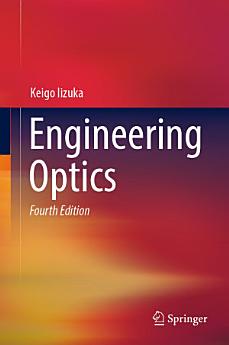Engineering Optics: Edition 4
About this ebook
The expanded 4th edition of this classic optics text is aimed at those wishing to apply their knowledge of optics to engineering problems, and provides a sound introduction to the basic principles of optics for engineering students. It describes fundamental material including Fourier optics, diffraction theory, geometrical optics, and lenses, and goes on to cover important topics such as optical signal processing, holography, tomography, optical communication, electro- and acousto-optic devices, integrated optics, 3D imaging and optical distance measurement.
Comprehensively updated throughout, this new edition features a major additional section on optical measurement techniques, including chapters on scanning methods, structured light pattern projection methods, depth measurement using a microscope, coherent as well as incoherent interferometry and distance mapping using CCD cameras.
Fully illustrated, the text includes numerous practical examples, together with worked exercises and end-of-chapter problem sets.
From the reviews of the third edition:
"It is intended not only for the physics and engineering students who want to acquire the basic principles of optics, but also for researchers and engineers who use optics in their research and/or professional activity. For all these people, this book will be a valuable source of scientific information. ..."
- Optica Applicata
"Iizuka managed to intermingle lively and exciting ideas, humorous and enthusiastic presentations, eye-catching and tasteful cartoons, significant backbone optics materials and even some frontier state-of-the-art optics information. I did not have a dull moment reading this book. It has a very attractive style: educational, yet entertaining...."
- IEEE Circuits and Devices Magazine
"I found this book most helpful in demonstrating an effective teaching approach that was especially suited for engineering students. ... The examples and problem sets at the each chapter are also helpful to students and instructors .... Overall, it is a delightful book, and I would definitely recommend it to students starting out on the path of exploring optical technologies and educators who want to enlighten young engineers fascinated by optics."
- Optics and Photonics News
About the author
Dr Keigo Iizuka is Professor Emeritus at the University of Toronto and a Fellow of the Optical Society of America. He was born in Kobe, Japan, and he began his university studies at Kyoto University. He completed his Ph. D at Harvard University, where he also worked for a short while as a research fellow and a lecturer. For the past thiry-five years, he has been a professor in the Department of Electrical and Computer Engineering at the University of Toronto.
His research interests have evolved over the years. He began with studies of the properties of antennas, microwave measurements, and microwave holography. These studies served as the foundation for subsequent projects such as the development of an ice surveying radar and a step frequency radar. With the advent of the laser, his studies shifted to the optical frequency range, where once again, his previous work on microwave phenomena served as an excellent foundation for the transition to optical phenomena. In the field of optics, his research includes optical measurement and sensor technology, fiber and integrated optics, the analysis of nonlinear guides, the invention of laser microvision and the Axi-Vision Camera, and 3D displays.







